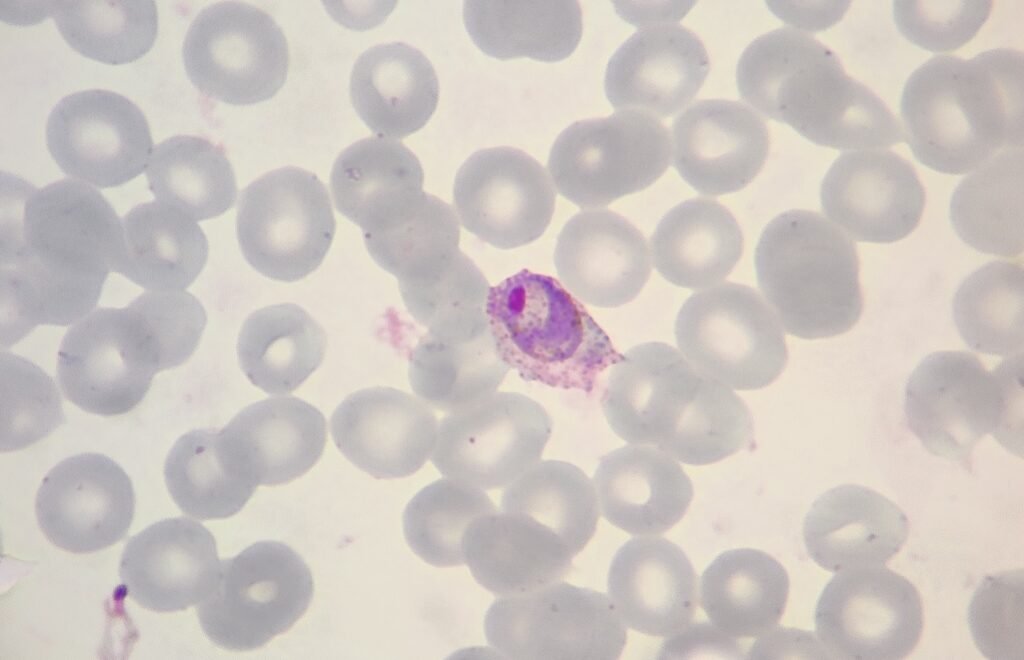MM250908: P. ovale
This week’s case featured a 29-year-old male who presented with fever, chills, sweats, headache, and malaise after returning from recent travel abroad. On examination, he was found to have mild anaemia and splenomegaly.
Key results:
- Hb: 102 g/L
- WBC: 6.1 × 10⁹/L
- Platelets: 92 × 10⁹/L
- Bilirubin: 38 µmol/L (predominantly indirect)
- LDH: Mildly raised
Blood film findings:

The peripheral blood film revealed the presence of malarial parasites, with ring forms and developing trophozoites visible within red blood cells. The film was stained with a malaria-specific stain, rather than the usual May Grünwald Giemsa (MGG) used for routine blood films. This allows for improved visibility of parasite morphology.
Some of the red cells are enlarged, others are oval or elongated. Some fimbriated (spikey) red cells are also seen. There is stippling present in the infected red cells. The dots are coarse but evenly distributed throughout the red cell; these are James’ dots.
Diagnosis:
The overall findings were consistent with Plasmodium ovale infection, one of the less common species of malaria. It is typically associated with relapsing infections due to dormant liver hypnozoites and is often distinguished by oval-shaped infected red cells with fimbriated edges.
Privacy Policy | Refund & Return Policy | Only Cells LTD © 2025
